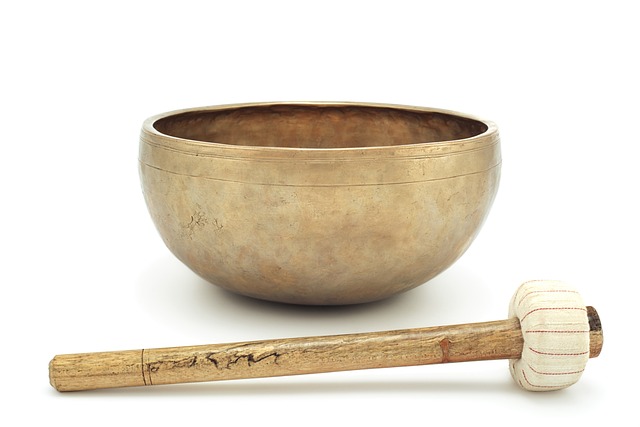Cold water immersion (CWI), or cold therapy, offers immediate and long-term relief for migraines. Exposing oneself to ice-cold temperatures constricts brain blood vessels, reduces inflammation and pain, triggers endorphins, and lowers core body temperature. Regular CWI sessions decrease migraine frequency and severity by desensitizing pain receptors and modulating brain responses to pain stimuli. This natural, non-invasive method complements traditional medications, aiding post-migraine recovery and prevention. However, individuals with medical conditions like Raynaud's disease or poor circulation should exercise caution as CWI may exacerbate symptoms. Always consult a healthcare professional before trying this technique.
Cold therapy, particularly cold water immersion, has emerged as a powerful tool for post-migraine recovery and prevention. This natural approach involves submerging yourself in cold water, offering significant relief from pain and reducing inflammation. By delving into the science behind this method, we’ll explore how it works and its numerous benefits. We’ll also provide a step-by-step guide to incorporating cold water immersion into your routine, along with essential precautions and potential side effects.
Understanding Cold Water Immersion for Migraine Management
Cold water immersion, also known as cold therapy, has emerged as a promising technique in migraine management and prevention. This involves submerging oneself in cold water, often ice-cold or near-freezing temperatures, for a short period of time. The concept is rooted in the idea that extreme cold can help constrict blood vessels in the brain, which is believed to reduce inflammation and alleviate migraine pain.
When suffering from a migraine attack, cold water immersion can offer rapid relief by cooling the body’s core temperature. This sudden drop in temperature signals the body to release endorphins, our natural painkillers, providing instant migraine relief. Moreover, regular cold therapy sessions have been shown to reduce the frequency and severity of migraines over time, making it a valuable tool for those seeking long-term prevention methods.
The Science Behind Cold Therapy and Its Benefits for Migraines
The science behind cold therapy reveals its potent effects on the nervous system, offering a natural approach to migraine recovery and prevention. When you immerse yourself in cold water, whether through a cold shower or specific treatments like cold water immersion for migraines, it triggers a cascade of physiological responses. Your body temperature drops, constricting blood vessels and reducing inflammation, which are key contributors to migraine pain. This rapid cooling effect also blocks certain nerve signals that initiate and amplify the intense headaches.
Regular practice of cold therapy can help desensitize your body’s pain receptors over time, acting as a preventive measure. It’s believed that the cold water immersion for migraines helps modulate the brain’s response to pain stimuli, making future migraine episodes less severe or frequent. This natural, non-invasive technique provides an attractive alternative or complement to traditional medications, allowing individuals to take control of their migraine management and experience relief from the discomfort associated with these debilitating headaches.
Step-by-Step Guide to Incorporating Cold Water Immersion into Your Routine
Incorporating cold water immersion into your routine can be a game-changer for post-migraine recovery and prevention. Start by preparing yourself mentally and physically – set aside 10-15 minutes, find a comfortable position, and ensure you’re in a safe environment to avoid any accidents. Fill a tub or large container with ice and cold water, ensuring the water is as cold as you can tolerate without discomfort. Gradually lower yourself into the water, allowing your body to adjust. Focus on deep breathing to enhance relaxation and reduce muscle tension. Stay immersed for 10-15 minutes, keeping your eyes closed if it helps you relax further. After immersion, dry off thoroughly, rehydrate, and consider stretching or light exercise to promote blood circulation. Regular practice of cold water immersion can significantly reduce migraine frequency and intensity over time.
Potential Side Effects and Precautions When Using Cold Therapy for Migraines
While cold therapy, such as cold water immersion, has been shown to be effective in alleviating post-migraine symptoms and preventing future attacks, it’s not without potential side effects. Some individuals may experience temporary sensitivity or discomfort when exposing affected areas to cold temperatures. Those with certain medical conditions like Raynaud’s disease, peripheral neuropathy, or poor circulation should exercise caution as cold therapy could potentially worsen their symptoms.
Moreover, prolonged exposure to extreme cold can lead to shivering, skin irritation, or even frostbite. It’s crucial to monitor the duration and intensity of cold water immersion sessions. Always start with short periods in cold water and gradually increase tolerance as your body adapts. Consulting a healthcare professional before trying cold therapy for migraines is recommended, especially if you have any pre-existing health issues or concerns.
Cold water immersion presents a promising natural approach to managing and preventing migraines. By understanding the science behind its benefits and following a simple step-by-step guide, individuals can incorporate this technique into their routine effectively. While generally safe, being aware of potential side effects ensures responsible usage. With continued research, cold therapy has the potential to revolutionize migraine management, offering folks a soothing and accessible solution for their pain.
